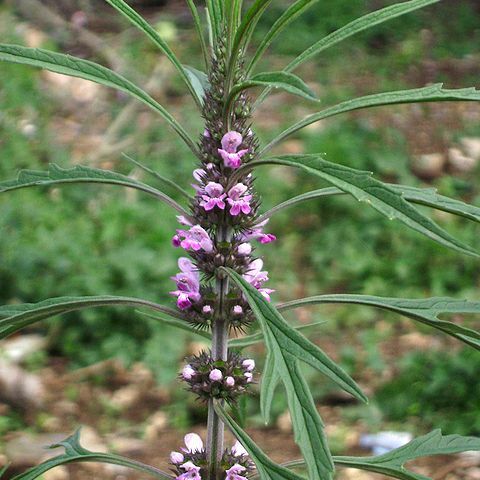A herb. It grows from seed each year. The stems are erect and 20-80 cm long. The lower leaves on the stem fall off early. The leaf stalk of the leaves in the middle of the stem are about 2 cm long. The leaf blade is oval and 5 cm long by 4 cm wide. The base is wedge shaped. There are 3 lobes like fingers on a hand. They are narrow and oblong. These also have 3 lobes. These lobes are narrow and 1-3 mm wide. There are many flowers in the head. The flowers can be white, red or reddish-purple. The nutlets are brown and oblong. They are 3 sided.
Annual or biennial; stems 10–15 dm, softly retrorse-hairy; lvs broadly ovate to rotund in outline, deeply 3-parted, each division laciniately toothed or cleft; lvs subtending the fls smaller, more deeply lobed into narrow segments; bracts half to fully as long as the weakly 10-nerved cal-tube; cor 10–14 mm, with a ring of hairs inside, the upper lip densely but finely hairy; 2n=20. Native of Asia, widely intr. in tropical Amer. and occasionally found in waste places in our range. May–Sept.

